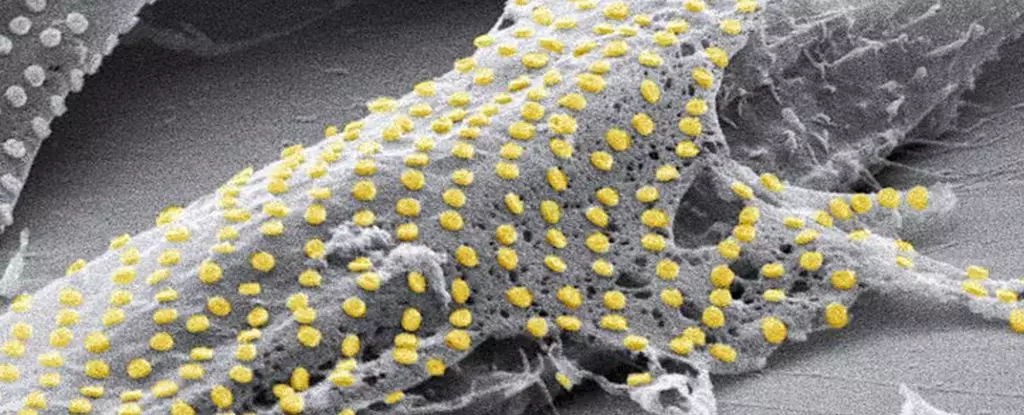Tattoos have come a long way from their traditional cultural origins. While they have always been a form of self-expression, tattoos are now evolving into a realm where they can serve a greater purpose. A group of scientists has developed a groundbreaking technique that involves tattooing gold onto living tissue, which paves the way for integrating human cells with electronic devices. By applying nanoimprint lithography, the researchers have successfully printed living mouse embryo fibroblast cells with patterns of gold nanodots and nanowires. This pioneering technique is a significant step forward in building more complex circuitry and opens up incredible health applications.
The potential impact of this integration between human cells and electronics is astounding. Engineer David Gracias, leading the team of scientists from Johns Hopkins University, envisions a future where sensors can remotely monitor and control the state of individual cells and their surrounding environment in real time. This technology could revolutionize healthcare by enabling early diagnosis and treatment of diseases, avoiding irreversible damage to organs. By tracking the health of isolated cells, medical professionals may be able to intervene at an early stage, providing timely and targeted therapies.
While the concept of merging electronics with human biology has fascinated engineers for years, there have been significant roadblocks along the way. One of the major challenges is the incompatibility between living tissue and the manufacturing techniques used in electronics production. Existing methods often involve the use of harsh chemicals, high temperatures, or vacuums that can destroy delicate living tissue. The innovative technique developed by Gracias and his team overcomes these hurdles, offering a promising solution.
The foundation of this breakthrough lies in nanoimprint lithography – a process that involves imprinting nanoscale patterns using a stamp. In this case, the material being imprinted is gold. After creating the pattern on a silicon wafer coated in polymer, the researchers dissolve the polymer to transfer the pattern onto thin films of glass. The glass is treated with a biological compound called cysteamine and coated with a hydrogel. The gold pattern is then transferred to the fibroblast cell after being treated with gelatin. Finally, the hydrogel is dissolved, leaving the gold attached to the cell. For the next 16 hours, the gold moves harmoniously with the cell. The team also successfully attached gold nanowire arrays to ex vivo rat brains, but the fibroblasts represent the most exciting result.
The ability to attach complex nanopatterns to living cells without compromising their viability is a breakthrough achievement. Gracias emphasizes the significance of the cells remaining alive and mobile with the gold tattoos, highlighting the historical challenges in reconciling living cells with conventional electronic fabrication methods. The simplicity and low cost of nanoscale lithography in this technique open doors to developing more intricate electronics, including electrodes, antennas, and circuits. Moreover, it allows for the integration of hydrogels and other soft materials that are incompatible with harsher fabrication methods.
The researchers anticipate that this nanopatterning process, combined with various materials and standard microfabrication techniques, will pave the way for the development of new cell culture substrates, biohybrid materials, bionic devices, and biosensors. The possibilities are vast, and the impact of such advancements can extend far beyond healthcare. This groundbreaking technique has the potential to revolutionize not only medicine but also areas such as wearable technology, prosthetics, and human-computer interfaces.
The integration of human cells with electronics through tattooing gold onto living tissue marks a significant milestone in scientific progress. The breakthrough achieved by Gracias and his team showcases the potential of this technique to revolutionize healthcare and open doors to new possibilities. By merging the worlds of biology and electronics, the future of technology takes a step closer to the realm of cyborgs. However, the true impact and scope of this breakthrough can only be realized with further research and exploration. As our understanding and capabilities continue to evolve, the horizon of possibilities expands, offering a potential future where humans and technology merge seamlessly.


Leave a Reply